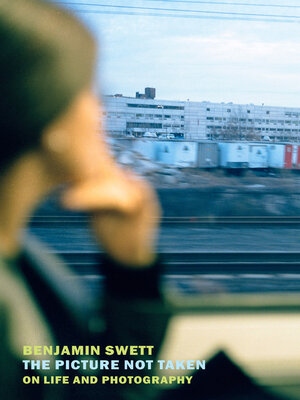
Sign up to save your library
With an OverDrive account, you can save your favorite libraries for at-a-glance information about availability. Find out more about OverDrive accounts.
Find this title in Libby, the library reading app by OverDrive.



Search for a digital library with this title
Title found at these libraries:
| Library Name | Distance |
|---|---|
| Loading... |
An ecologically minded collection of essays in the vein of Rebecca Solnit and Susan Sontag, covering everything from the equipment of photography to the difficulties of perception itself.
In The Picture Not Taken, the photographer and writer Benjamin Swett considers the intersections between photography, memory, the natural world, and the course of life in essays on subjects that include family snapshots, images of racial violence, the shape of abiding love, and the experience of unforseen and irremediable loss. In these beautifully written, deeply affecting pages, Swett moves with a wonderful improvisatory freedom among his chosen themes. The Picture Not Taken is a book of transfixing pieces that possesses the intensity and integrity and heft of the wholly new.
In The Picture Not Taken, the photographer and writer Benjamin Swett considers the intersections between photography, memory, the natural world, and the course of life in essays on subjects that include family snapshots, images of racial violence, the shape of abiding love, and the experience of unforseen and irremediable loss. In these beautifully written, deeply affecting pages, Swett moves with a wonderful improvisatory freedom among his chosen themes. The Picture Not Taken is a book of transfixing pieces that possesses the intensity and integrity and heft of the wholly new.







